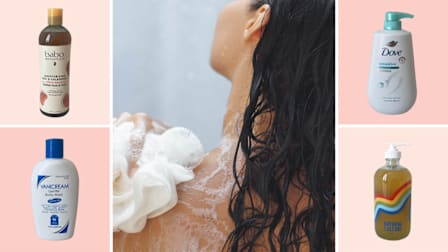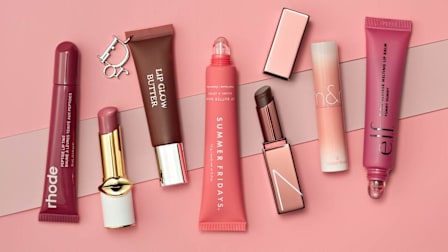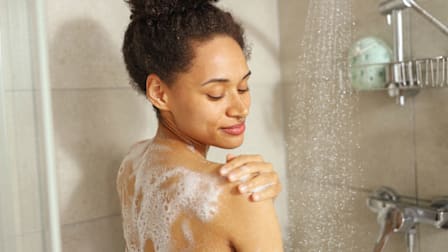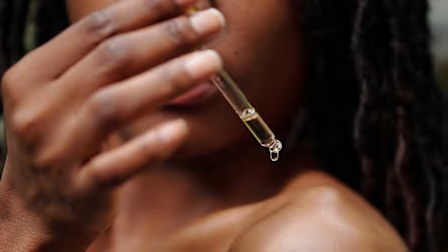Urea Is the Powerful Skin Care Ingredient You Might Not Know About
The name may be funny, but urea's ability to fight skin issues like KP, seborrheic dermatitis, and calluses is no joke
When you shop through retailer links on our site, we may earn affiliate commissions. 100% of the fees we collect are used to support our nonprofit mission. Learn more.
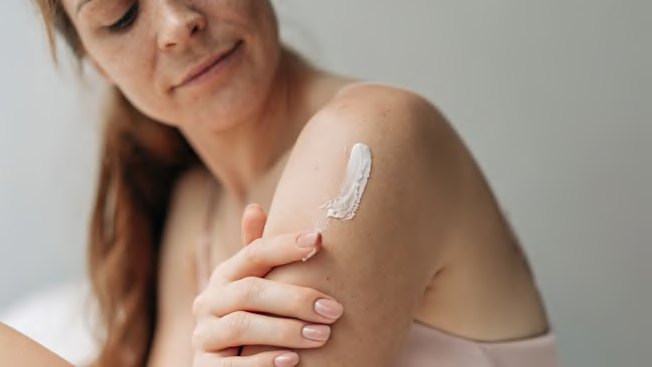
There’s a moment from junior high seared into my memory, when another kid asked me why I had “all those red bumps on my arms.” It was something that until then I had barely noticed; after his comment, of course, I became fixated.
Years later, I learned that “those red bumps” are a harmless skin variation called keratosis pilaris, in which there’s a buildup of a protein called keratin on the surface of the skin. Later still, I discovered, much to my delight, that an ingredient called urea is exceptional for smoothing keratosis pilaris (or, as it’s more commonly called, KP). Since incorporating moisturizers that contain urea, I’ve had far fewer little red bumps that seemed to so distress my middle school classmate.
Urea gets much less press than some other, splashier skin care ingredients like hyaluronic acid or vitamin C. But it’s a powerful—and generally well-tolerated—component in both over-the-counter and prescription skin care that just might be the secret to treating your KP, psoriasis, razor bumps, and other conditions.
- All About Urea: What Is Urea? How to Use Urea Skin Care Products Is Urea Made From Urine?
What Is Urea?
“Urea is one of the most underappreciated workhorses in dermatology—effective, versatile, and backed by decades of clinical use,” says Joe Tung, MD, medical director of UPMC Falk Dermatology in Pittsburgh. It naturally occurs in the skin’s outermost layer, called the epidermis, where it helps ensure the skin remains hydrated. “It is part of the skin’s own natural moisturizing factor, so when we apply urea topically, we’re not introducing something foreign; we’re actually replenishing what the skin already uses to stay healthy and hydrated.”
How to Determine the Urea Dosage You Need
Urea, in my experience, isn’t often called out on product labels as a star ingredient the way other star active ingredients, like retinol or salicylic acid, are—so you might need to peek at the ingredients list on the back of the product packaging to see if it’s present. If you want to guarantee that it’s in the product in a high percentage, though, your best bet is finding a product where the urea is specifically mentioned, such as La Roche-Posay Lipikar Urea 10 percent Roughness Smoothing Lotion, Cetaphil Rough & Bumpy Daily Smoothing Moisturizer with 20 percent urea, or Prequel Advanced Relief Moisturizing Milk with 10% urea. It’s also available via prescription formulation.
For hydration purposes, consider sticking with a lower-dose urea moisturizer. “At lower concentrations—2 percent to 10 percent—urea functions primarily as a humectant, drawing in moisture,” says Tung. “This is helpful in managing conditions like xerosis (dry skin) and eczema, where gentle hydration and barrier support are needed.”
Keratosis pilaris can be aggravated by dry skin (which is one reason it’s often worse in the winter), so moisturizing it with whatever you’ve got lying around might help some. But a urea moisturizer with higher doses of urea can break down the keratin buildup that’s causing those bumps, thus resulting in smoother skin. “At 10 percent to 30 percent, urea becomes keratolytic, helping to shed rough, bumpy, or scaly skin. This is beneficial for treating calluses on the hands and feet, ichthyosis, thicker psoriasis plaques, and keratosis pilaris,” says Tung. “As a keratolytic agent, it disrupts the bonds that hold dead skin cells together, facilitating gentle exfoliation. This softens thickened or rough skin.” Lotion containing urea can be helpful for people with thick calluses that can emerge from diabetes, too, according to the American Academy of Dermatology. These concentrations can also help with seborrheic dermatitis, a condition in which the scalp typically becomes inflamed with scaly patches. (If you’ve ever had a baby with cradle cap, you’re familiar with seborrheic dermatitis.)
Even if you have “normal,” healthy skin without any particular issues, you can still benefit from adding urea to your skin care routine. “Using urea at a lower concentration (2 to 10 percent) on normal skin can boost hydration, giving the skin a plump and youthful glow,” says Tung. “It can even have anti-aging effects by strengthening skin resilience and boosting the penetration of other compounds you apply as part of your skin care routine.” So if you’re using a retinoid, for example, you can consider applying a low-dose urea moisturizer over the retinoid to help it do its magic (which is what I do!).
Bonus: Urea is remarkably well-tolerated. A review of the available literature on urea found only one case report of allergic contact dermatitis from a urea-containing product, and the study was unable to discern with confidence whether it was the urea or another ingredient causing the issue. Still, you can overuse it, especially if you’re using it alongside retinoids. “High-strength urea (≥30 percent) can cause stinging, peeling, or redness when overused—particularly when combined with other products like retinoids,” says Tung. “Using strong urea creams too frequently can also compromise the skin barrier, leading to increased transepidermal water loss—the very thing you’re often trying to prevent.” Keep high-strength urea use to tougher, thicker areas of the body just a few times a week.
Is Urea Made From Urine?
No! It is not, though this is a common misconception. It does, however, stem from urine originally. “Biologically, urea is made in your liver through the urea cycle, which converts toxic ammonia (a byproduct of protein breakdown) into urea. Your body then excretes it in urine and sweat—so yes, urea is one of the compounds found in urine,” says Tung. “But in the world of commercial skin care, urea is never harvested from urine. Instead, it’s 100 percent synthetic and lab‑manufactured.”
But—and this is just speculation—I suspect the linguistic similarities may be one reason it has been underappreciated in the skin care and beauty world. Discerning beauty shoppers will have to keep an eye out for this overlooked workhorse in their future medicine cabinets.

















